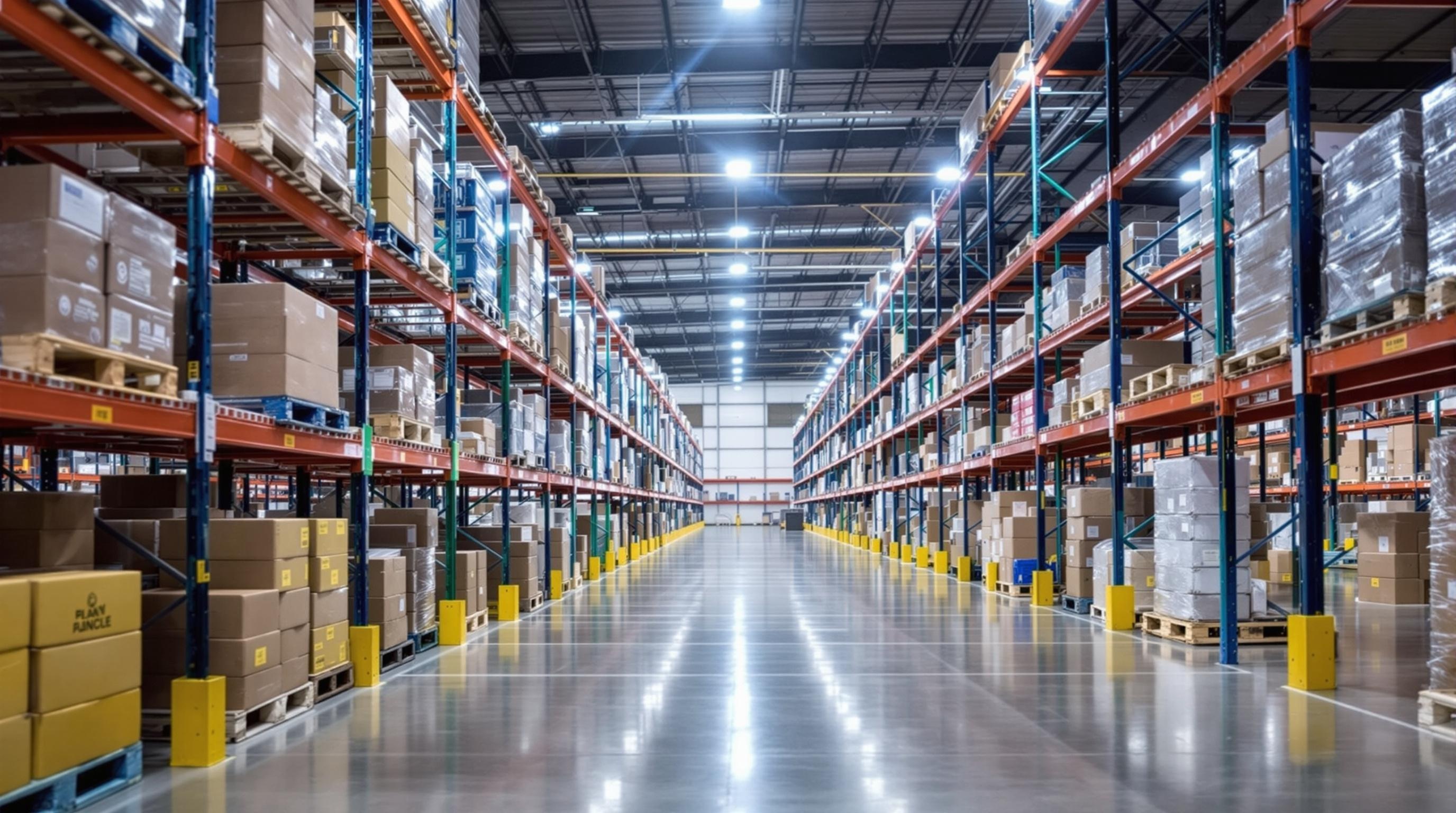Optimizing warehouse labor costs demands a sharp focus, especially as European warehouses grapple with staff turnover rates that far exceed the cross-industry norm. Rising labor expenses can quickly eat into profit margins, so I recommend proven approaches that address both cost and productivity. Dynamic scheduling, workforce empowerment, focused upskilling, and smart automation consistently deliver measurable improvements across various markets.
Key Takeaways:
- High turnover, frequent absenteeism, and skill shortages drive up warehouse labor costs and disrupt operational efficiency.
- Relying on outdated, inflexible labor models and ignoring regional labor differences leads to wasted budgets and unstable teams.
- Giving teams clear career progression, strong training programs, and performance-based incentives directly lowers turnover and lifts productivity.
- Introducing automation alongside cross-training and lean methods can reduce manual labor requirements by up to 50% and pay off quickly.
- Using data-driven platforms like advanced learning management systems, warehouse management systems, and real-time KPI analytics helps spot inefficiencies and keeps warehouse operations ready for future challenges.
Strategic Recommendations
To address these challenges, warehouse leaders should implement a combination of the following strategies:
- Invest in workforce empowerment: Create clear career pathways and implement strong training initiatives to reduce turnover.
- Leverage smart automation: Balance automation with lean process improvements and cross-training to maximize efficiency and reduce costs.
- Adopt dynamic, region-aware scheduling: Tailor labor models to account for local regulations and workforce availability.
- Utilize advanced data platforms: Employ warehouse management systems and real-time analytics to identify and fix inefficiencies swiftly.
Moving Forward
I encourage warehouse leaders to act decisively. Invest in your people, embrace technology, and use data to guide every decision. This approach doesn’t just cut costs—it builds a more resilient, high-performing operation that stands out in a competitive market.
Warehouse Labor Costs Are Draining Profit Margins
European warehouses are facing a staggering 37% annual staff turnover rate, as highlighted by Awardco. That’s massively higher than the cross-industry average. Every resignation triggers a costly cycle of recruiting, onboarding, and training—far more than just administrative headaches, these challenges directly erode the bottom line.
Labor is the single largest expense for warehouses, with hourly costs ranging dramatically—from €10.6 in Bulgaria to €55.2 in Luxembourg, according to Eurostat. Beyond wages, non-wage costs such as social contributions and benefits add another 24.7% to the total bill. Overlooking these figures means letting profits slip away unnoticed.
But high turnover is just one part of the challenge. Absenteeism, skill gaps, and low employee engagement further undermine productivity and operational efficiency. Drawing from decades on warehouse floors, I’ve seen firsthand how disengaged teams consistently miss targets, require more supervision, and create a snowball effect of inefficiency.
Main Drivers of Rising Labor Costs
- Constant onboarding: Every new hire means lost productivity and added training costs.
- Absenteeism: Even a few missing hands during peak periods can disrupt entire shifts.
- Skill gaps: Untrained or poorly matched staff make more mistakes, slow down operations, and risk costly errors.
- Low engagement: Disengaged employees are less productive and more likely to leave, restarting the turnover cycle.
Strategies to Reduce Labor Costs
Reducing labor costs isn’t just about cutting headcount. Sustainable savings require:
- Smart scheduling
- Strong retention strategies
- Investment in upskilling
Prioritizing employee engagement and ongoing training delivers quick returns through lower turnover, fewer mistakes, and smoother shifts. If you ignore labor dynamics, even the most efficient inventory or technology systems won’t protect your profits.

Outdated Labor Models as a Root Cause
Rigid labor models are a major drain on budgets and flexibility. Fixed or reactive scheduling traps teams in inefficient routines, frequently resulting in overstaffing during slow periods and a scramble for expensive on-demand labor during peaks. According to Gartner, this misalignment can waste 20–30% of operational budgets.
Heavy reliance on siloed tasks compounds these inefficiencies. Workers confined to narrow roles can’t adapt to shifting demands, forcing the use of costly temporary labor—especially during seasonal surges—which can push costs up by as much as 25%. I’ve seen operations lose significant margin simply because their teams weren’t cross-trained or empowered to switch tasks as needed.
High attrition and disengagement are not just about pay. Insufficient training, lack of advancement opportunities, and weak incentive structures drive skilled workers away. To retain your best people, invest in:
- Comprehensive onboarding and ongoing training
- Transparent career progression paths
- Performance-based incentives and recognition
- Empowering your workforce to make decisions and solve problems
Equipping teams with the right skills and supporting them through modern labor models not only cuts costs—it also builds a resilient, engaged workforce that can adapt to operational demands and regional labor realities.

Empowering Teams and Embracing Automation: The Modern Solution
Empowering your workforce is the cornerstone of labor cost optimization. In my experience, competitive compensation and clear career growth paths foster a culture where employees are invested in performance. Introducing AI-driven feedback and recognition isn’t just a perk—it’s a strategic lever that reduces turnover and boosts productivity.
Optimizing resources is essential. Dynamic labor models that flex with demand, cross-training staff for multiple roles, and applying lean warehouse principles can cut overtime by 12% and reduce unnecessary travel within the facility by 30%. Blue Yonder LMS has shown that focusing on reducing idle time can deliver a 15–20% improvement in labor costs.
Automation is the true game changer. Deploying solutions like AutoStore, Exotec DeepSky, or RPA can cut manual labor by up to 70%. Storage density can increase by 400%, and productivity may jump 4–5 times, as recent projects demonstrate. Savant WMS reports a 204% ROI. With automation adoption growing at a 14.3% CAGR, there’s never been a better time to invest.
Practical strategies for immediate impact include:
- Flexible scheduling and upskilling programs, which can reduce absenteeism by 22% and recruitment costs by €4,000 per hire.
- Cross-training to ensure coverage for peak periods without costly temp labor.
- Lean warehouse techniques to eliminate wasted motion and streamline every process.
By empowering your teams and automating wherever possible, you’ll see a direct and positive impact on your bottom line.

Proven Results: Data-Driven Success in European Warehouses
European warehouses have proven that focused investment in technology and people delivers measurable results. Elektroimportøren, for instance, achieved a full return on investment in warehouse automation within just two years. Their success was rooted in prioritizing workforce training and promoting from within—approaches that kept employees engaged and maximized the value of automation upgrades.
Savant WMS delivered similar results for an industrial distributor, saving $405,000 annually in headcount and achieving a remarkable 204% ROI. These are not isolated cases. I’ve seen how KPI-driven operations, especially those tracking metrics like “Processing Cost per Order,” consistently cut labor expenses by up to 18% per year. Monitoring these KPIs not only highlights cost savings but also reveals training gaps—which account for roughly 8% of labor hours. Targeted development programs close these gaps, ensuring your investment in labor management software pays off quickly.
Key Advantages of Data-Driven Labor Optimization
What sets high-performing warehouses apart?
- Workforce development and internal promotions accelerate automation adoption and boost morale.
- WMS-integrated automation sustains operational resilience. During COVID-19, automated sites maintained 95% output, compared to just 60% for manual operations.
- Productivity gains with advanced automation systems reach 4–5x, as demonstrated by Exotec deployments.
- KPI analysis uncovers both cost-saving opportunities and areas where further training delivers quick wins.
Automation alone isn’t enough. A data-centric approach—combining robust software, actionable KPIs, and a commitment to workforce development—consistently delivers higher ROI, greater productivity, and operational resilience, even during unexpected disruptions.

Essential Tools for Smarter Labor Management and Cost Control
To stay competitive in warehouse operations, leveraging the right tools is crucial for both efficiency and savings. Integrating labor management software and automation is a proven way to control labor expenses while boosting output.
Key Tools and Platforms That Drive Results
Here are the essential solutions I recommend for optimizing labor costs and managing staff more effectively:
- Labor Management Systems (LMS):
Blue Yonder LMS uses AI-driven incentives and advanced analytics to motivate teams and pinpoint inefficiencies. Infor Labour Management excels at dynamic scheduling and accurate forecasting, making it easier to balance labor supply with fluctuating demand. - Warehouse Management Systems (WMS):
Savant WMS and SAP EWM provide robust automation integration, streamlining repetitive tasks and offering full cost visibility. SAP EWM stands out for its detailed reporting and integration capabilities, simplifying labor expense tracking. - Automation Solutions:
AutoStore and Exotec DeepSky offer scalable, energy-efficient automation for picking and sorting, dramatically reducing manual labor needs. Robotic Process Automation (RPA) and IoT-enabled Automated Guided Vehicles (AGVs) further cut reliance on traditional labor, keeping costs in check as order volumes rise. - Payroll & Compliance Tools:
Payroll analytics platforms help monitor wage patterns, identify overtime spikes, and optimize shift planning. For European operations, specialized compliance tools ensure adherence to EU labor laws, controlling non-wage costs and benefits with precision. - KPI & Analytics Platforms:
Warehouse Execution Systems (WES) and Exotec DeepSky enable real-time KPI tracking. These insights empower continuous process refinement, helping you correct underperformance and sustain cost improvements.
By adopting these systems, you’re not just managing today’s workforce—you’re future-proofing operations to meet tomorrow’s demands.

Next Steps to Build a Future-Proof, Cost-Efficient Workforce
Pinpoint Inefficiencies and Empower Your Team
Begin by conducting a labor cost audit, benchmarking your performance against Eurostat data and your own KPIs. This process will reveal inefficiencies and regional gaps within your organization. Significant cost variances often emerge, providing clear direction for targeted improvements.
To reduce turnover and absenteeism, empower your workforce by investing in:
- Cross-training
- Flexible scheduling
- AI-driven incentive programs
These strategies not only improve retention but also build a more adaptive team. Implementing such programs directly impacts productivity and cost control.
Prioritize Automation and Build Resilience
Prioritize automation projects with a proven ROI. Start with scalable solutions like AutoStore and Exotec, and integrate them with your WMS to maximize operational efficiency and avoid fragmented improvements.
To prepare for uncertainty, adopt:
- Scenario planning
- Dynamic labor models
These approaches help you respond quickly to economic swings or geopolitical shifts, keeping your supply chain resilient.
Track your progress using real-time analytics and KPIs. By refining your approach as labor costs, market demands, and technologies evolve, you’ll create a workforce that’s cost-efficient and ready for whatever comes next.

Ready to optimize your warehouse labor costs? Start by auditing your processes, investing in your people, and leveraging automation for long-term success.
Sources:
Gartner – Optimizing Warehouse Labor Costs: 3 Essential Strategies
Shipedge – Warehouse Cost Reduction
Eurostat – Hourly Labour Costs
Element Logic – ROI of Warehouse Automation
HTSS Group – Warehouse Workforce Development
ReportLinker
Exotec – 10 Logistics KPIs to Track in Your Warehouse; Calculating ROI of Warehouse Automation
Warehouse Whisper – Best Labor Management Software
Eurostat – Turnover in Industry; Turnover Index in Industry
Verified Market Research – Europe Warehouse Automation Market
Statista – Warehouse Vacancy Rate Europe Country
Warehouse News – Retaining Warehouse Staff
McKinsey – How to Retain Talent in European Supply Chains
EuroDev – Retaining Talent in European Warehouses
Nucleus Research – Savant WMS ROI Case Study
Loadsure – Supply Chain Disruption in Europe 2023










